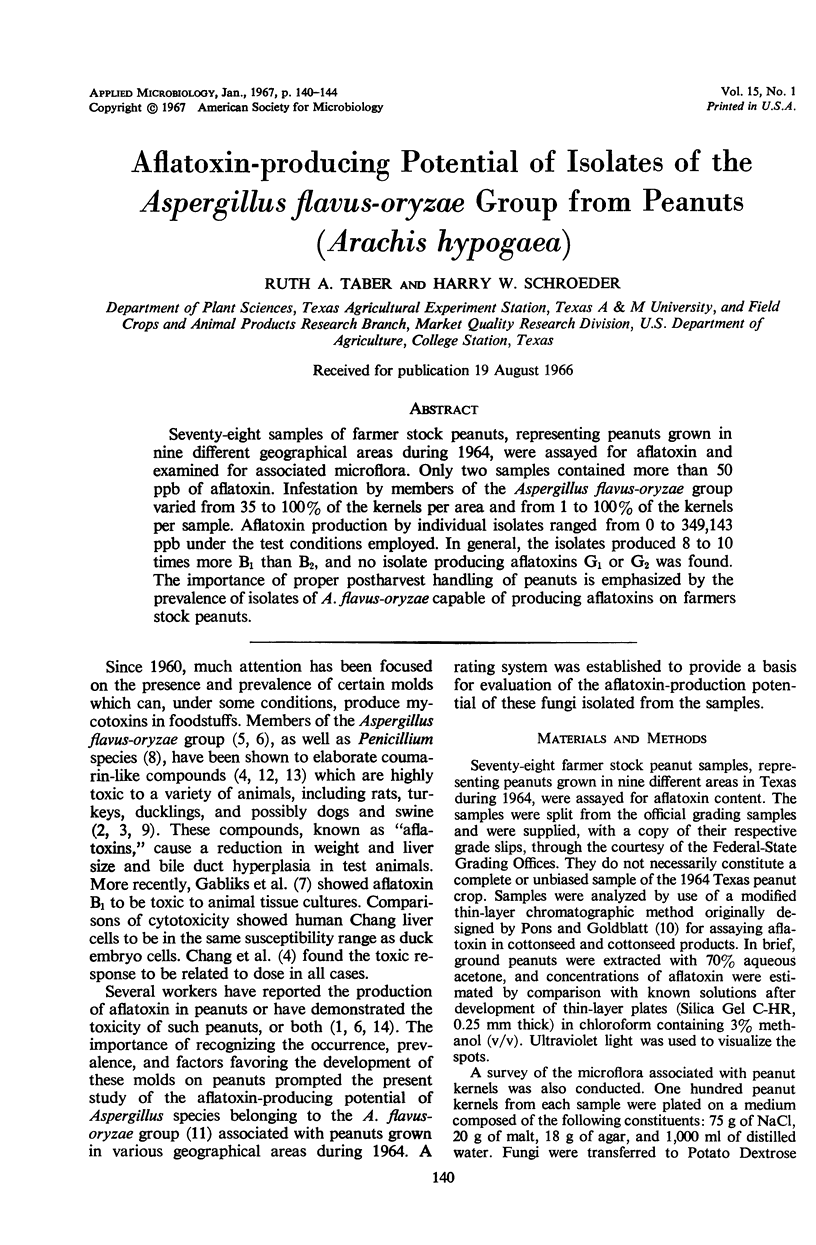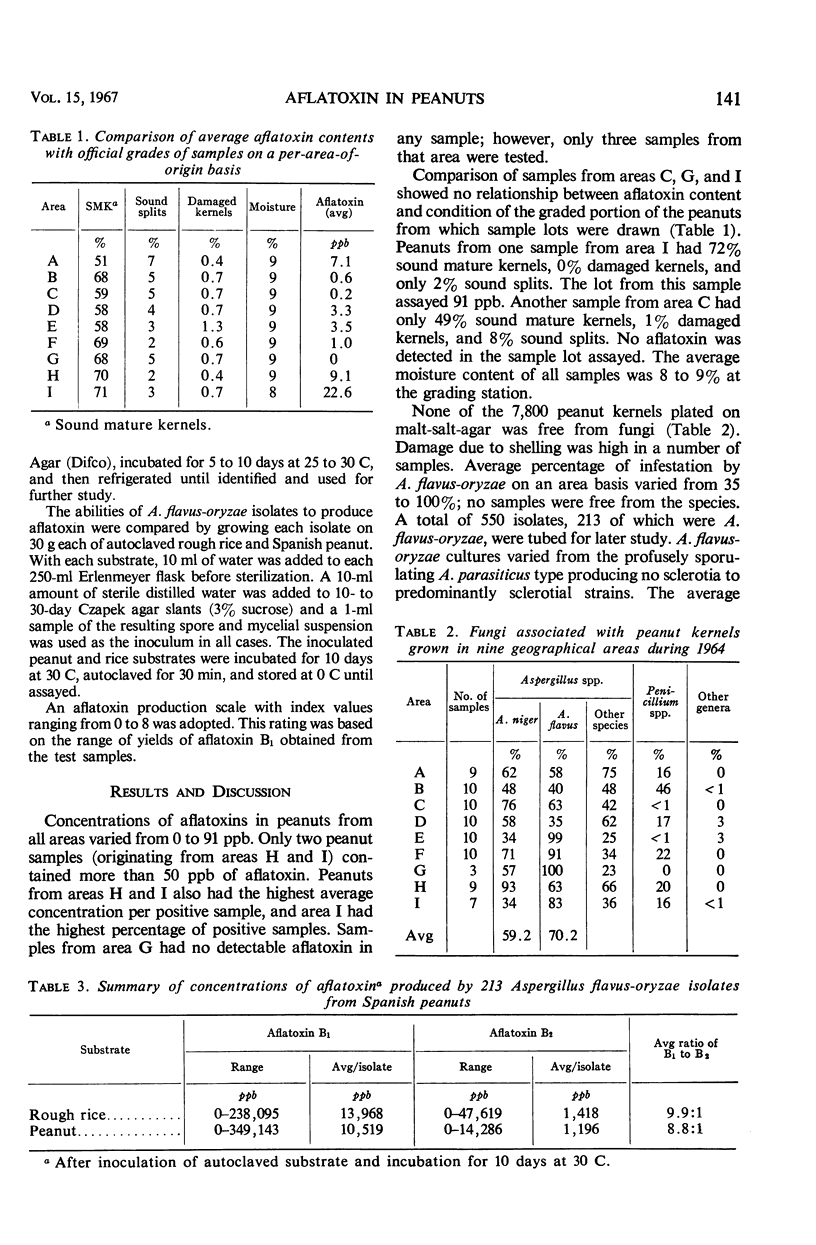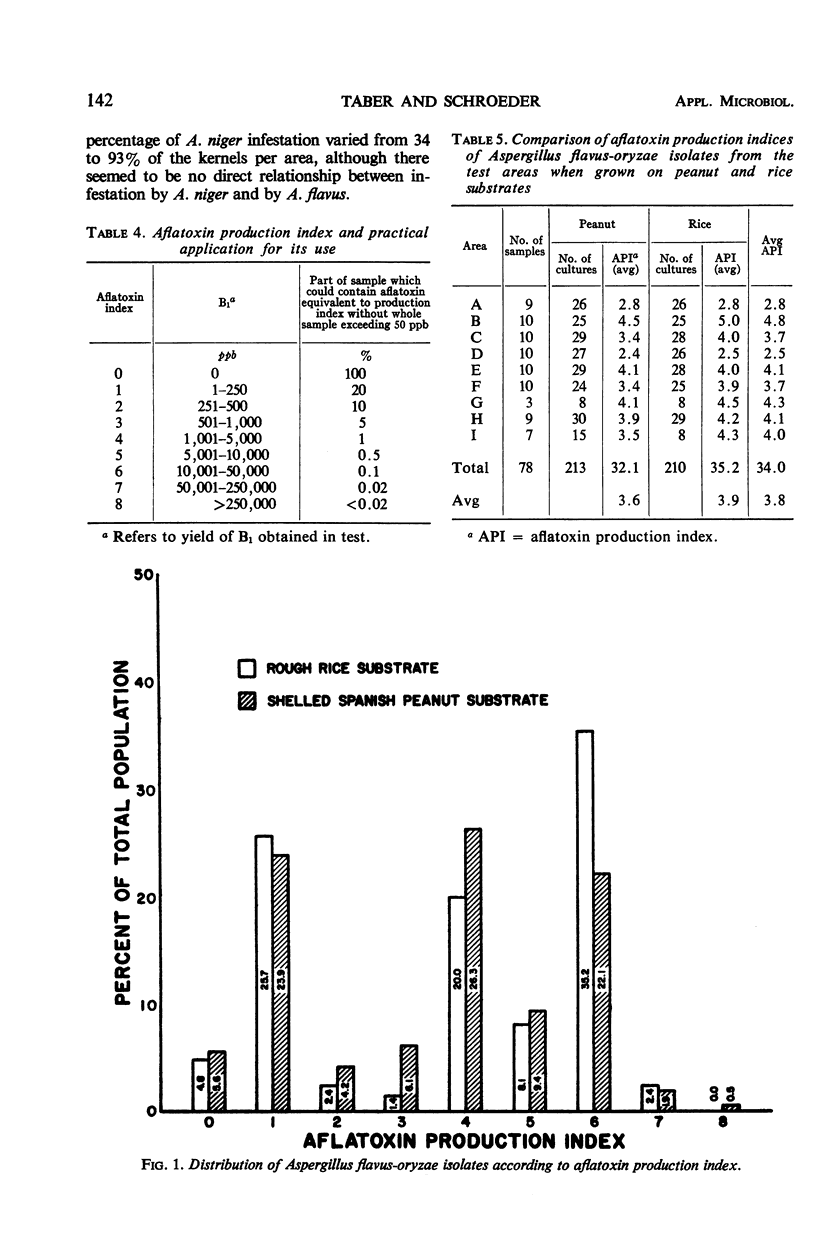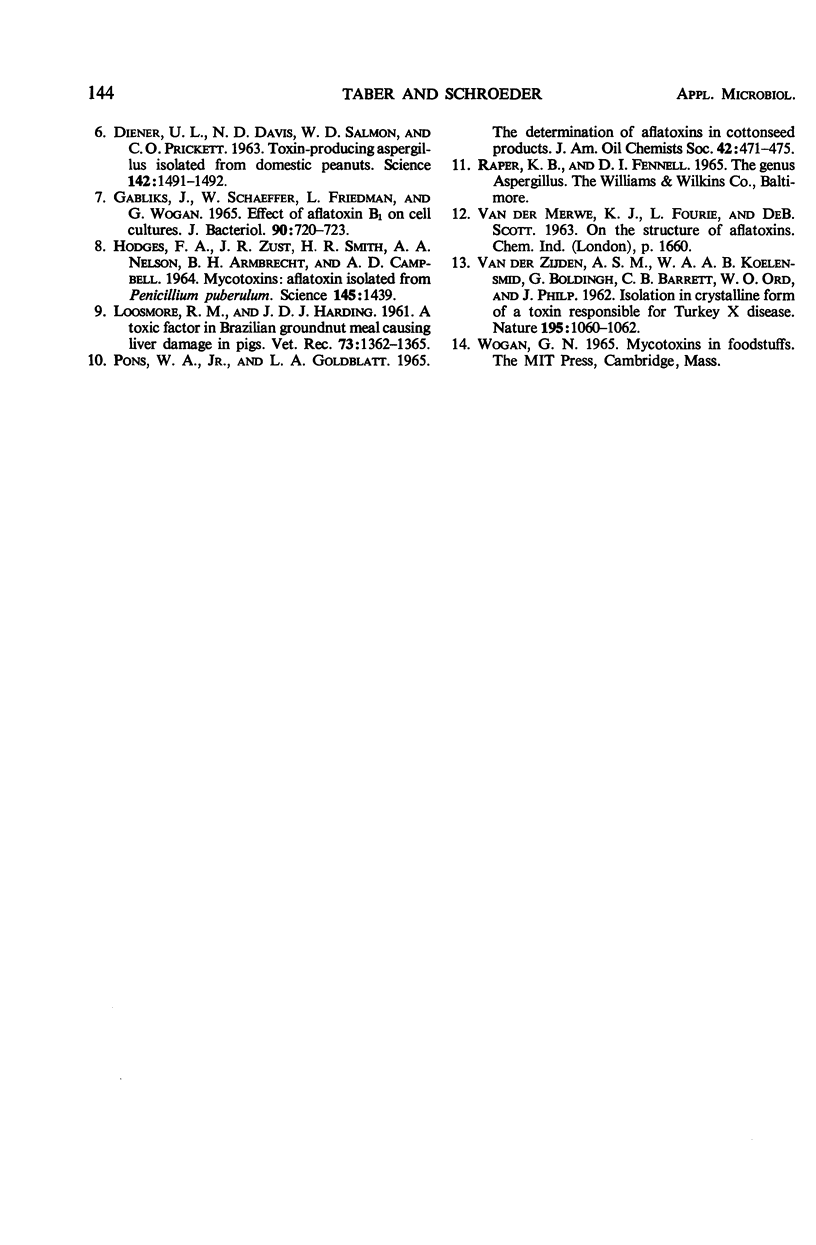Abstract
Seventy-eight samples of farmer stock peanuts, representing peanuts grown in nine different geographical areas during 1964, were assayed for aflatoxin and examined for associated microflora. Only two samples contained more than 50 ppb of aflatoxin. Infestation by members of the Aspergillus flavus-oryzae group varied from 35 to 100% of the kernels per area and from 1 to 100% of the kernels per sample. Aflatoxin production by individual isolates ranged from 0 to 349,143 ppb under the test conditions employed. In general, the isolates produced 8 to 10 times more B1 than B2, and no isolate producing aflatoxins G1 or G2 was found. The importance of proper postharvest handling of peanuts is emphasized by the prevalence of isolates of A. flavus-oryzae capable of producing aflatoxins on farmers stock peanuts.
Full text
PDF




Selected References
These references are in PubMed. This may not be the complete list of references from this article.
- Ashworth L. J., Jr, Schroeder H. W., Langley B. C. Aflatoxins: Environmental Factors Governing Occurrence in Spanish Peanuts. Science. 1965 May 28;148(3674):1228–1229. doi: 10.1126/science.148.3674.1228. [DOI] [PubMed] [Google Scholar]
- BAILEY W. S., GROTH A. H., Jr The relationship of hepatitis X of dogs and moldy corn poisoning of swine. J Am Vet Med Assoc. 1959 Jun 1;134(11):514–516. [PubMed] [Google Scholar]
- CHANG S. B., ABDEL-KADER M. M., WICK E. L., WOGAN G. N. AFLATOXIN B2: CHEMICAL IDENTITY AND BIOLOGICAL ACTIVITY. Science. 1963 Nov 29;142(3596):1191–1192. doi: 10.1126/science.142.3596.1191. [DOI] [PubMed] [Google Scholar]
- DIENER U. L., DAVIS N. D., SALMON W. D., PRICKET C. O. TOXIN-PRODUCING ASPERGILLUS ISOLATED FROM DOMESTIC PEANUTS. Science. 1963 Dec 13;142(3598):1491–1492. doi: 10.1126/science.142.3598.1491. [DOI] [PubMed] [Google Scholar]
- Gabliks J., Schaeffer W., Friedman L., Wogan G. Effect of Aflatoxin B(1) on Cell Cultures. J Bacteriol. 1965 Sep;90(3):720–723. doi: 10.1128/jb.90.3.720-723.1965. [DOI] [PMC free article] [PubMed] [Google Scholar]
- HODGES F. A., ZUST J. R., SMITH H. R., NELSON A. A., ARMBRECHT B. H., CAMPBELL A. D. MYCOTOXINS: AFLATOXIN ISOLATED FROM PENICILLIUM PUBERULUM. Science. 1964 Sep 25;145(3639):1439–1439. doi: 10.1126/science.145.3639.1439. [DOI] [PubMed] [Google Scholar]
- PONS W. A., Jr, GOLDBLATT L. A. THE DETERMINATION OF AFLATOXINS IN COTTONSEED PRODUCTS. J Am Oil Chem Soc. 1965 Jun;42:471–475. doi: 10.1007/BF02540087. [DOI] [PubMed] [Google Scholar]


